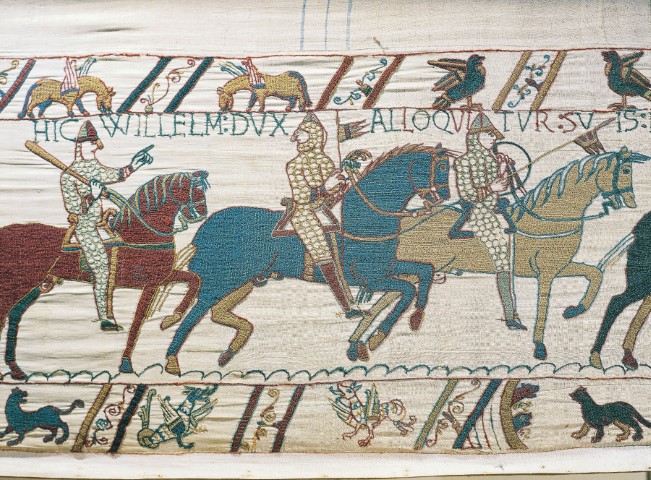Today I’m going off the rotating script again, and heading off to the intersection of art and craft (and history).
At 230′ long and 20″ wide, the Bayeux Tapestry uses about 50 scenes to depict the events leading up to and including the 1066 Battle of Hastings, where Norman troops under William II (William the Conqueror) defeated the Anglo-Saxon troops under King Harold Godwinson, which was the start of the Norman Conquest of England. Created in the 1070s, over the course of 1100 years it has remained mostly intact.
Technically, the Bayeux Tapestry isn’t a tapestry, as it was embroidered rather than woven. Having watched Mrs. Freeholder embroider a lot in her younger days, it amazes me that the thing was created at all. Perhaps it shouldn’t, as it’s believed the tapestry itself is incomplete as the final scenes that are believed should represent William’s ascent to the English throne are missing and were perhaps never created.
The history of the tapestry is confused. Believed to have been commissioned by William’s half brother, Bishop Odo, it’s first historical mention is in 1476 inventory of the Bayeux Cathedral. It’s believed that the work was created by Anglo-Saxon workers, but even that is far from sure. It is noted in various historical texts throughout the 18th century. Nearly destroyed during the French Revolution, in 1803 it was sent Paris for display. It missed destruction in a number of later wars, including WWII, when it escaped Nazi confiscation during the Allies liberation of Paris.
Since that time, a number of replicas of the tapestry have been created, which are displayed in various museums around the world. One is made up of 1.5 million pieces of spring steel and includes a hypothetical recreation of the missing final segments.
The Bayeux Tapestry’s normal home is the Bayeux Museum, although it does get out of the house on the odd occasion.




